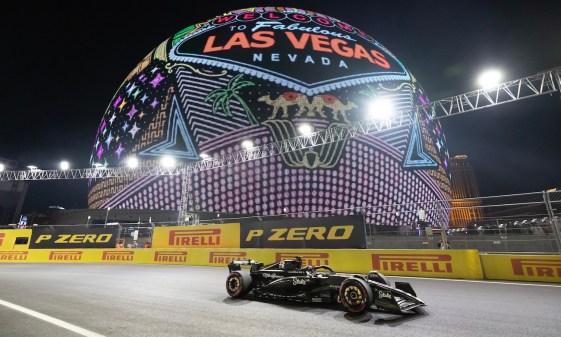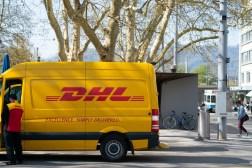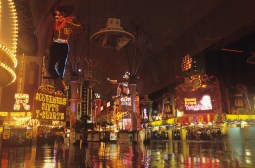Las Vegas’ driverless shuttle involved in crash on first day

Thursday marked Las Vegas’ debut of a self-driving shuttle that transports commuters along a half-mile loop, free of cost. Thursday also marked the shuttle’s first collision.
Less than two hours after hitting the streets, the shuttle was struck by a delivery truck, which was attempting to back into an alley, a local NBC affiliate reported. The collision was a minor incident, and no injuries were reported — only dents to the shuttle’s exterior paneling.
According to one of the shuttle’s passengers, the collision seemed to happen in “slow-motion.”
“On our ride, we encountered a medium-large articulated delivery truck stopped in the street. The driver was trying to back his trailer into an alleyway on the left. The shuttle bus very obediently stopped a reasonable distance from the truck and waited for it to move,” said Jeff Zurschmeide.
“What the autonomous shuttle bus didn’t expect was that the truck would back up towards it,” he said. “As the driver was swinging the trailer into the alley, the tractor portion of the truck was coming right at us – very slowly. We had plenty of time to watch it happen.”
Las Vegas police confirmed that the driver of the truck was to blame for the crash and issued him a ticket.
“The shuttle did what it was supposed to do in that it’s sensors registered the truck and the shuttle stopped to avoid the accident,” the city said in a statement. “Had the truck had the same sensing equipment that the shuttle has, the accident would have been avoided.”
However, some people are critical of the autonomous vehicle, claiming that a human driver would have been able to avoid the collision by moving out of the way rather than waiting to be hit by the truck.
Zurschmeide acknowledged that the truck driver was certainly to blame for the accident, but he also stated that improved safety features on self-driving shuttles could allow the vehicles to react smarter in the future.
“We had about 20 feet of empty street behind us (I looked) and most human drivers would have thrown the car into reverse and used some of that space to get away from the truck. Or at least leaned on the horn and made our presence harder to miss,” said Zurschmeide.
“My suggestion to Navya and Keolis is that if the shuttle doesn’t have cameras and LIDAR facing backwards, it would be good to enable the shuttle to reverse if something’s coming toward it. And a horn for the attendant would be a good feature, too,” he said.
Despite the incident, the self-driving shuttle was back on its route within 24 hours, and supporters of the technology believe that there is still ample evidence to suggest that autonomous vehicles are the future of public transportation.
“Automated shuttles have the ability to reduce operational expenditures by lowering per mile costs, reducing labor expenditures, and offering a variety of flexible and on-demand public transportation services when paired with advanced algorithms and smartphone apps,” Susan Shaheen, a civil engineer who studies mobility innovation at UC Berkeley, told Wired.
While the Las Vegas pilot has exposed some shortcomings in the technology, autonomous public transportation has been operating successfully in both Switzerland and Singapore for more than a year, and Heathrow Airport in London has used driverless pods since 2011.






